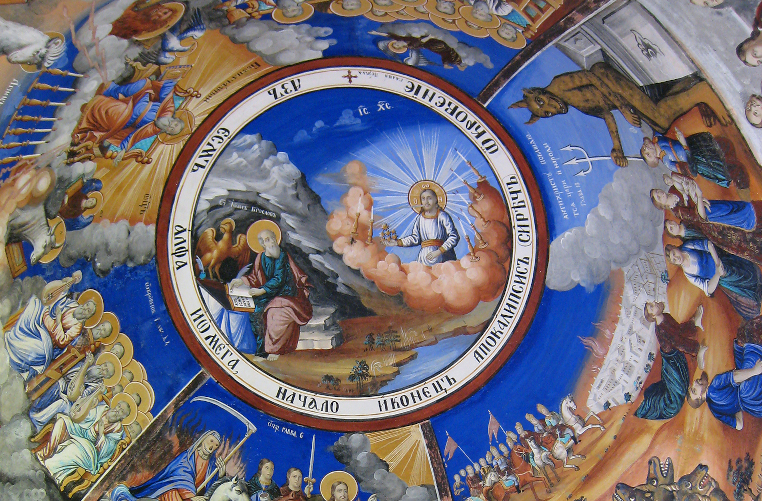Copyright Resilience

Bill Gates made news last week by challenging climate advocates to accept the ‘hard truth’ that temperature rises will not cause enough deaths to justify the priority placed on them. Perhaps the real story is Gates’ use of a very old tactic to dismiss new targets – Gates implied that the grave concerns of even global institutions and science are doomsday fantasies. However, this tactic’s effectiveness depends on an illusion: that humanity is constantly beset by doomsday mania. The hard truth is that today’s concerns are unique, and uniquely scientific. We should act accordingly. By now, most of us suspect that we’re in a civilizational crisis (see polls). During the last eventful decade I’ve been working on that assumption helping to organise action and meetings among people who share this realisation and studying this community’s growth. If I have three takeaways from this work, it’s these. The more I look at our situation, the easier it actually gets to see how a deep, democratic, movement could change the operating system of our civilisation. That movement will happen most quickly if we openly express concern, and then notice that most others feel similarly. Then we see how much change is possible. We must get better at recognising and counteracting the subtle, effective ways the people find to change the subject or hush this conversation – just when it’s about to get interesting. My current work with the Climate Majority Project involves catalyzing this conversation. This article challenges a myth that mutes that dialogue. How to stifle the silent majority’s awareness of itself Bill Gates’ recent controversial essay made headlines for calling for less priority on climate change. It is just the latest demonstration of perhaps the single most effective way of dampening rising awareness of a shared threat: Express surprise at people who accept ‘doomsday’ prophecies. Position yourself against these people as a realist, Demonstrate that you are realist by defending (very authoritatively) the notion that reality as we know it will basically persist (things aren’t that bad). Gates follows this formula closely, opening with an apocalyptic quote, attributed to ‘many in the climate community’. He then asserts that less concern is rational – there will be some turbulence but people are needlessly indulging in a long civilisational tradition of doomism. If we compare the quote Gates invents with real ones we can see how large and eminent today’s ‘doomsday’ cult is: In a few decades, cataclysmic climate change will decimate civilization. The evidence is all around us—just look at all the heat waves and storms caused by rising global temperatures. Nothing matters more than limiting the rise in temperature. – Gates paraphrasing ‘many in the climate community.’ “We are on a highway to climate hell with our foot still on the accelerator.” –Antonio Guterres, UN Secretary-General, 2022 An immense increase of scale in endeavors to conserve our biosphere is needed to avoid untold suffering due to the climate crisis – World Scientists Warning, 2019 (11,528 scientists) We are heading for environmental disaster unless we change our habits quickly – Survey question agreed with by 79% of participants in 51 countries. People who endorse the status quo have been equating profound climate concerns with apocalyptic hysteria for decades – but this tactic might be easier to undermine than you think. It has worked so well because of a faulty assumption that hides in plain sight throughout the climate debate: That history has been full of widespread apocalyptic fervor – which reasonable people have stood against, especially since the dawn of science. But, it turns out, that idea is a fantasy – and one which is particularly popular among people who see themselves as the realists in the room. Gates and his favourite author Vaclav Smil are examples. The reality is that the last 75 years have probably featured more concern about the end of humanity and civilisation than any other previous 75 year period in world history. It probably isn’t even close. Certainly every age has a few doomsayers, there’s no doubt about that. However, just because in most years past it was possible to find somebody who believed humanity is doomed, does not mean that current levels of distress about the future are historically normal. It is possible to find somebody, somewhere who believes in just about anything. The question is how many people actually thought the end was nigh in the past? When we (might have) thought the world would end Most concerns about collapse or “apocalypse” in the far past derived not from science but from religious beliefs (especially Christianity). Historians have only identified a few times, though, when fears of imminent doom might have reached fever pitch and become truly widespread. The strongest candidate for a widespread irrational scare has been the year 1000. 19th century authors wrote lurid tales of widespread panic at the millennium. But recently scholars have found that this telling of history became popular more because it made for a good story than because of evidence. Many contemporary historians thinks there was little real concern, while others hold that it was a concern among clergy of these periods (who wrote most of the records) but that we have no evidence that majority was concerned[1]. The other examples are the 1330-50s which saw terrible outbreaks of the Black Death and war which did cause a collapse of many medieval societies. This and another plague in 1667 were interpreted as evidence of divine disfavour and, for some, a coming apocalypse. No historian, however, asserts that a majority believed in the coming doomsday in either era, as awful as things were. So it seems that concern about the end of civilisation or even humanity actually reached historically remarkable levels at the dawn of the nuclear age. Imagine that – at the very time that these concerns became rational because of humanity’s newfound power to extinguish itself. Since the 1950s a high percentage of the population has probably feared their society’s breakdown continuously (though the 90s were a respite), making recent years the most continuously high period of such concern in history. It makes sense. As we’ve gained more power we’ve had a number of science based scares (nuclear war, population overshoot, climate and AI). As Isaac Asimov said ‘The saddest aspect of life right now is that science gathers knowledge faster than society gathers wisdom.’ A long string of luminaries has made similar observations. None of those people urged panic, all suggested urgent changes to the way we organise society. So far, none of these emerging threats have caused a collapse, but all of them were reasonable, at least at first. Climate change is the only such concern that has grown five decades since it was proposed (more below). Before moving on to that, it’s important to notice how the myth of perpetual panic is subtly helping to delegitimise so many who think climate change could cause a breakdown of modern societies. The nature of the frame’s power is revealed by the fact that those who use it never specifically mention any of these ‘respectable’ people. Many who use this method of dismissal, such as Gates favourite author Vaclav Smil, in How the World Really Works simply attribute ‘doomsday’ beliefs only to ‘activists’. It doesn’t work, rhetorically, to paint 11,500 scientists as the supposed descendents of the supposed apocalypse obsessed hordes. Essentially the apocalypse fantasy invents a long history of majority hysteria and thus subtly makes today’s collapse concern seem normal – normal hysteria, able to be safely ignored by any realist. The ‘realist’, contrasting themselves to the apocalypticist, reaffirms that reality as we know it will remain pretty much the same. There will be some chaos, but ultimately it’s manageable. Large change almost never feels real till it happens. Thus, defenders of the status quo can always claim the realist mantle – until events prove otherwise. … Since science became an institution, our societies’ most learned bodies have periodically identified major new threats which are initially poorly understood and then investigated them. They do so by applying the same understanding of the same physical laws that helped humanity raise agricultural yields, build steam engines, build computers, end plagues, and travel to the moon. Contemporary, popular collapse concerns have largely arisen rationally out of this process, even if none have actually crashed our civilization. Malthus’ fear of overpopulation was the first such fear, nuclear war was the second, climate and environmental breakdown was a third, AI a fourth. Only climate and environmental concerns have continued to rise over five decades. It’s easy to agree that fears of nuclear war were not irrational: just because nuclear armageddon didn’t happen, doesn’t mean that we didn’t come close. As a matter of fact, it is because we took nuclear war seriously that it didn’t happen. And of course this concern has recently revived, rationally, and we may have just been lucky in the past – numerous near misses have been documented. The most illuminating threat to compare with climate and environmental breakdown, though, is overpopulation. Like climate change, initial concerns about overpopulation emerged by simply projecting forward current trends – population growth instead of CO2 growth. Trends suggested humanity’s behaviour was unsustainable. Reverend Malthus was the first to fear that population growth could outpace food production, leaving humanity too large to feed itself in the early 1800s, and similar “population bomb’ anxieties arose in the late 1960s. Civilizational breakdown was feared in both cases. Crucially, though, these fears did not intensify over time. They were investigated, acted on, and then gradually faded. Fertility rates dropped as societies developed, and the feared collapse did not materialize. Fears that Malthus was right lessened within a few decades and had fallen substantially by the 1850s. The second wave of population-bomb concern was shorter. Beginning in the late sixties, it lessened by the mid seventies and was confined to very few holdouts by the mid 1980s. Investigation of population growth showed that the same industrial economies that initially enable population growth also include factors that lower birth rates, leading to well-documented demographic transitions. Many societies naturally shifted to lower fertility levels as access to education, contraception, and the ability to save financially for old age rather than relying on children to feed them in old age. Thus, concern diminished over time. That’s what a rational fear looks like: it is triggered by an observation, leading to serious engagement, and its prominence rises or falls with evidence. The “population bomb” turned out to be self-defusing, whereas the climate challenge has only grown more urgent after investigation. Further study of earth systems science has only deepened concern about carbon pollutants’ effects and the breakdown of earth systems. Scientists haven’t simply missed the fact that new technologies are helpful, but it has been offset by other discoveries. Our estimate of how much warming is safe has been revised downward—from 2.0°C to 1.5°C—wiping out almost two decades of emissions that we thought we could afford. The reason is simple: further study reveals that our climate is just less stable than we initially thought, based on limited evidence. Many scientists now believe that industrial civilization was made possible because we happened to be in a welcoming but fragile window of geological history—the last 10,000 years. Earlier uninformed understanding underestimated our chances of disrupting that state. A challenge that we always suspected was going to be difficult to answer has been made worse by bad planetary luck. Unlike birth rates, carbon emissions have not declined with economic growth— they have just increased more slowly. Even the vast majority of business people agree that addressing climate change requires deliberate, large-scale policy interventions, such as carbon pricing and transitioning to renewable energy. Because of the political and economic obstacles to global coordination, effective responses have been slow, and concern has thus risen. Thus, in summary, the idea that today’s collapse concern is analogous to yesterday’s doomsday belief is not a hard truth, but a comfortable myth. The last 70 years of human history have shown uniquely widespread, and scientific, fears of calamity. Many of our best minds have remarked on how reasonable this is, and like them, I don’t suggest panicking. Instead we should calmly notice that we are surrounded by people who notice the same thing. This majority should know how new and special it is. In fact, thinking otherwise is potentially an apocalyptical error. It stops concerned people from seeing our power to create saner societies together. Liam Kavanagh is co-director of the Climate Majority Project. Sign up on Substack to be updated on the upcoming reports that explore the themes of this article in depth. [1] Landes, Richard (2000). “The Fear of an Apocalyptic Year 1000: Augustinian Historiography, Medieval and Modern” (PDF). Speculum. 75 (1): 97–145. https://www.bu.edu/history/files/2011/10/11.Fear-of-an-Apocalyptic-Year-1000-Speculum.pdf?utm_source=chatgpt.com Teaser image credit: Apocalypse depicted in Christian Orthodox traditional fresco scenes in Osogovo Monastery, North Macedonia. By Edal Anton Lefterov – Own work, Public Domain, https://commons.wikimedia.org/w/index.php?curid=10353361



